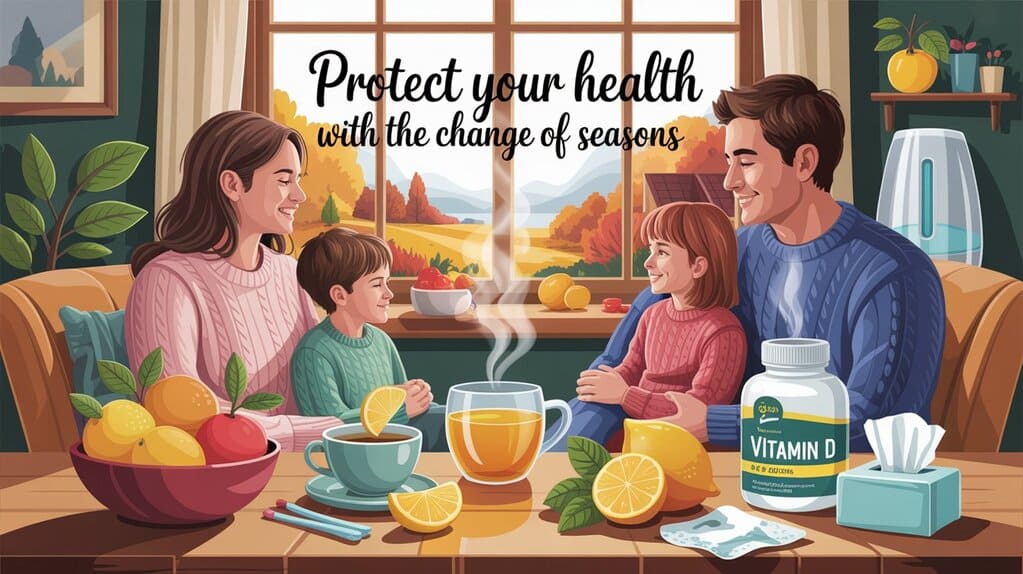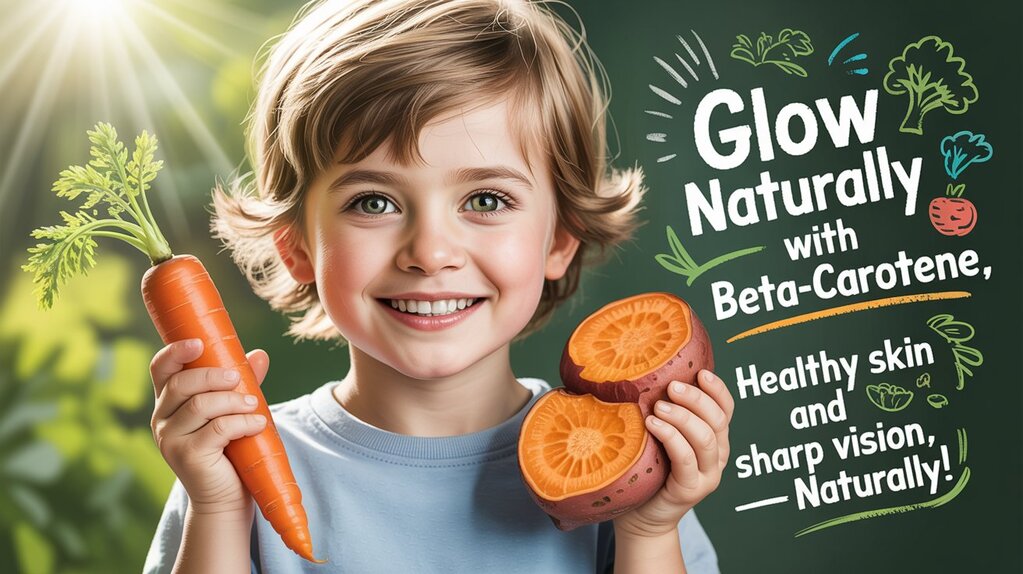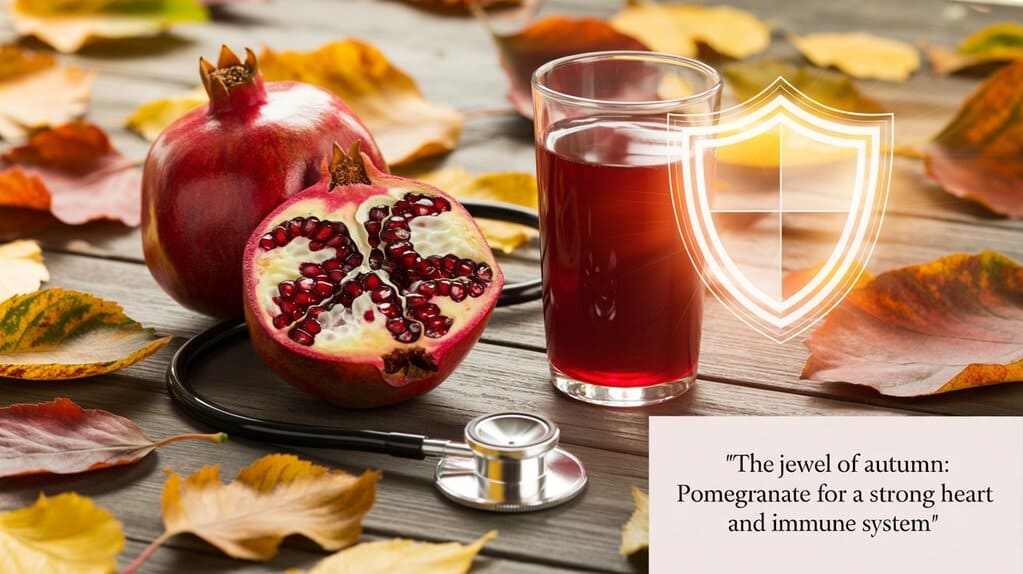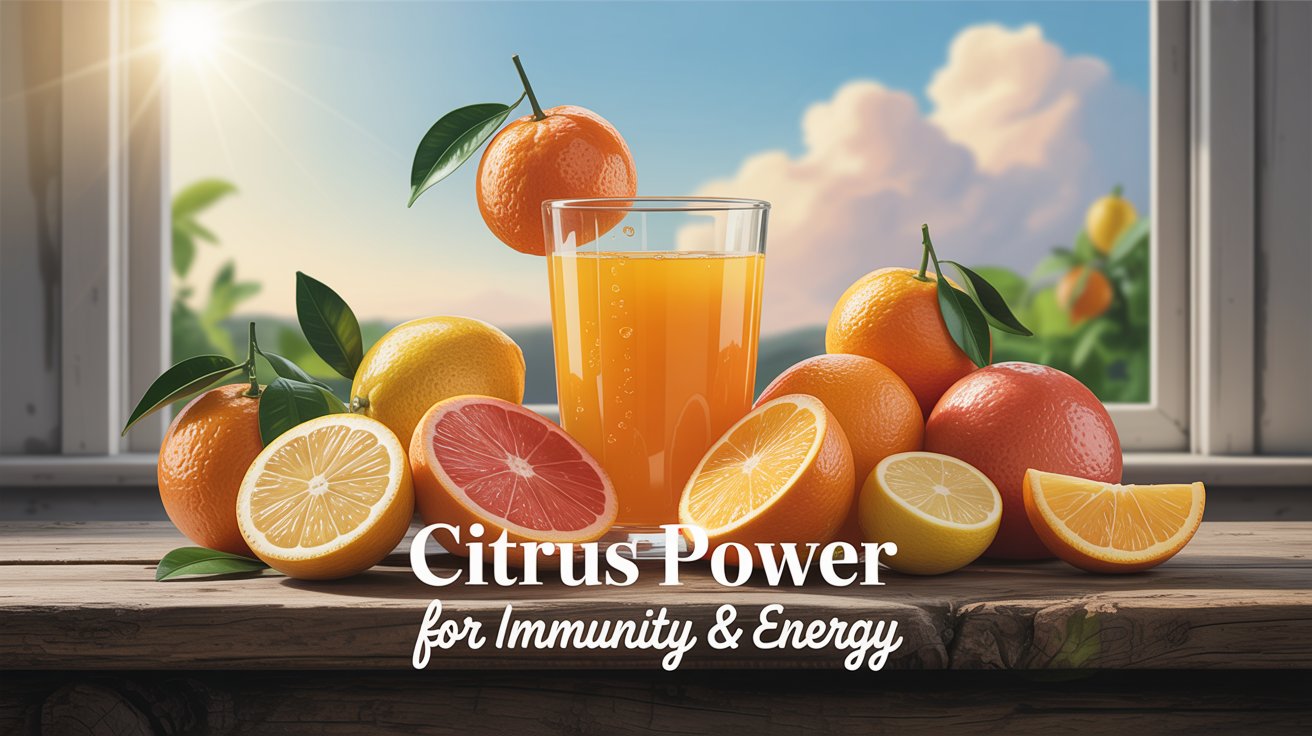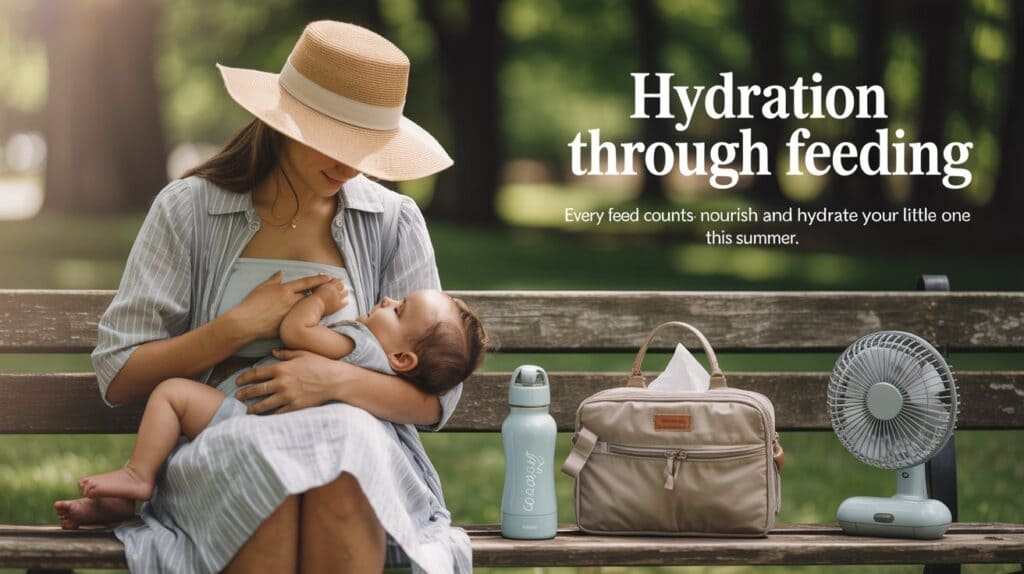
Introduction
Summer can be a wonderful time to bond with your baby—longer days, warm walks in the park, and family vacations. However, infants are especially vulnerable to summer’s intense heat, UV radiation, and dehydration. Their delicate bodies and immature regulatory systems mean that extra care and planning are essential during this season.
This comprehensive guide will explore how to protect infants during summer, highlighting the best preventive practices, nutritional considerations, and daily routines to help babies stay safe and healthy. Backed by current pediatric research, data from reputable medical journals, and trusted websites such as Wikipedia, The American Academy of Pediatrics (AAP), and Mayo Clinic, this article is your complete reference for summer infant care.
Understanding Infant Vulnerability in Summer
Unlike older children or adults, infants cannot easily adapt to environmental temperature changes. Their thermoregulatory system is immature, meaning their bodies are not efficient at sweating, cooling, or signaling distress due to overheating.
🧬 According to The Journal of Pediatrics (2023), infants under 12 months are 3–5 times more susceptible to heat stress than children aged 3–5 years.
🔥 Key Risks of Summer for Infants
| Risk | Description |
|---|---|
| Dehydration | Infants can lose fluids quickly, especially in hot weather. |
| Heatstroke | Dangerous rise in body temperature due to sun exposure or overdressing. |
| Sunburn | Infant skin is thinner and lacks protective melanin. |
| Rashes | Heat rash and diaper rash are more common in warm, humid conditions. |

How to Protect Infants During Summer
🍼 1. Hydration is Crucial
Breastmilk or formula should be the primary source of hydration for infants under six months. Avoid giving water unless directed by a doctor.
📘 Mayo Clinic advises that infants under six months should not be given water, as it can interfere with nutrient absorption and electrolyte balance.
✅ Tips for Hydration:
- Breastfeed more frequently during hot days.
- Offer additional formula if bottle-feeding.
- Watch for signs of dehydration: dry lips, few wet diapers, sunken fontanelle.
☀️ 2. Avoid Direct Sunlight
Infants under 6 months should not be exposed to direct sunlight. Their skin is extremely sensitive to UV rays, increasing the risk of sunburn and long-term skin damage.
📖 According to The American Academy of Dermatology, just 10–15 minutes of direct sunlight can cause first-degree burns on infant skin.
🔎 Use the UV Index:
| UV Index Level | Risk Level | Action |
|---|---|---|
| 0–2 | Low | Minimal protection needed |
| 3–7 | Moderate/High | Stay in shade, use protection |
| 8+ | Very High | Keep infant indoors or fully shielded |
👒 3. Dress Your Baby Right
Choosing the right clothing can protect your baby from both heat and UV rays.
Recommended Summer Outfits:
| Item | Purpose |
|---|---|
| Lightweight cotton onesie | Breathable and cool |
| Wide-brimmed hat | Shields eyes, ears, and scalp |
| UV-protective stroller shade | Blocks up to 95% of UV rays |
| Socks (if outdoors) | Protect from heat surfaces like sand or pavement |
🩺 The Harvard Health Blog notes that overdressing infants is a common summer mistake, often causing heat rash and irritability.
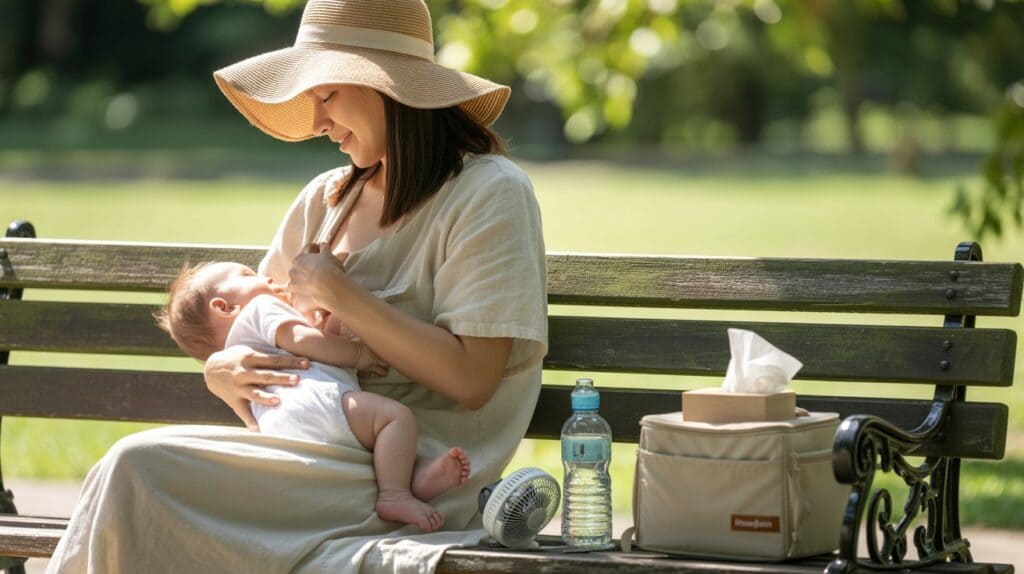
🧴 4. Sunscreen Guidelines for Infants
- Under 6 months: Avoid sunscreen unless no shade is available. Use small amounts of mineral-based sunscreens (zinc oxide or titanium dioxide) on exposed skin like hands or cheeks.
- Over 6 months: Apply broad-spectrum SPF 30+ sunscreen 15–30 minutes before sun exposure. Reapply every 2 hours or after sweating/swimming.
🔬 The Skin Cancer Foundation (2023) recommends mineral sunscreens for infants, as they sit on the skin’s surface and are less likely to cause irritation.
🌡️ 5. Monitor Temperature and Environment
Babies should not be left in hot or poorly ventilated environments, including cars, which can heat up rapidly and cause fatal heatstroke in minutes.
Ideal Room Temperature:
| Baby’s Age | Recommended Room Temp |
|---|---|
| 0–12 months | 20–22°C (68–72°F) |
🚨 CDC.gov reports that over 38 children die annually in the U.S. from being left in hot cars—infants are especially at risk.
Signs of Overheating:
- Rapid breathing
- Hot skin without sweating
- Lethargy or irritability
- Flushed cheeks
🧺 6. Prevent Heat Rashes and Diaper Rashes
Warm, moist environments create the perfect conditions for heat rash (prickly heat) and diaper rash.
Prevention Tips:
- Use loose-fitting cotton clothing.
- Apply hypoallergenic baby powder in creases.
- Change diapers frequently and apply barrier creams.
- Bathe baby with lukewarm water daily.
Safe Summer Outings with Your Baby
👶 1. Best Times for Outdoor Walks
| Time of Day | UV Risk | Suitability |
|---|---|---|
| 6–9 a.m. | Low | Ideal |
| 10 a.m.–4 p.m. | High | Avoid unless shaded |
| 5–7 p.m. | Lowering | Safer with protection |
Use shaded strollers, UV-protective covers, and clip-on fans to increase airflow during walks.
🧃 2. Keep a Baby Travel Kit
Essential items include:
- Extra water for parents (stay hydrated!)
- Wipes and extra diapers
- Portable fan or cooling towels
- A muslin cloth for extra shade

Traveling with an Infant in Summer
Summer often means travel and outings, but infant travel requires preparation.
🧳 Packing Checklist for Summer Trips:
| Item | Reason |
|---|---|
| Baby-safe sunscreen | Only for >6 months |
| Hat and sunglasses | Eye and skin protection |
| Thermometer | Monitor for fever |
| Extra clothing | For layering or sudden weather changes |
| Hydration supplies | Breastfeeding accessories, formula, bottles |
✈️ World Health Organization (WHO) advises that babies should not travel to excessively hot or humid regions during peak summer months unless absolutely necessary.
Nutrition During Summer for Infants
🥣 1. Breastfed or Formula-fed Babies (<6 months)
- No additional food or water required.
- Ensure frequent feedings during hot weather.
🥗 2. Babies 6–12 Months
- Introduce hydrating fruits like watermelon and cucumber (pureed or mashed).
- Avoid processed juices or sugary drinks.
- Ensure meals include zinc, iron, and vitamin C for immune health.
🧪 The Lancet Child & Adolescent Health (2023) emphasizes that hydration from food sources, like fruits and veggies, is safe and beneficial when solid foods are introduced appropriately.
Conclusion: Cool, Safe, and Happy Summer for Your Infant
While summer can be a time of exploration and bonding, infants require special protection from the sun and heat. From choosing the right clothes to ensuring proper hydration and feeding routines, every step matters.
✅ Final Checklist for Infant Summer Care:
- 👒 Avoid sun exposure (especially for babies <6 months)
- 🍼 Ensure frequent feedings and hydration
- 🧴 Use baby-safe sunscreen only when needed
- 🌳 Opt for shaded walks in early morning or late evening
- 👶 Dress baby in breathable, light fabrics
- 🧼 Prevent rashes with proper hygiene
With the right strategies, you can enjoy summer safely with your baby while promoting their health and development.
References
- Infant Heat Safety – Wikipedia
- The American Academy of Pediatrics (AAP) – “Summer Safety Tips for Babies”
- The Journal of Pediatrics (2023) – “Heat Vulnerability in Infants”
- Mayo Clinic – “Hydration and Feeding for Newborns in Warm Weather”
- The Skin Cancer Foundation (2023) – “Infant Sunscreen Guidelines”
- Harvard Health Blog – “Keeping Infants Cool in Summer”
- CDC.gov – “Vehicular Heatstroke and Children”
- The Lancet Child & Adolescent Health (2023) – “Seasonal Infant Feeding and Hydration”
- WHO – “Climate Risks and Travel Recommendations for Infants”

